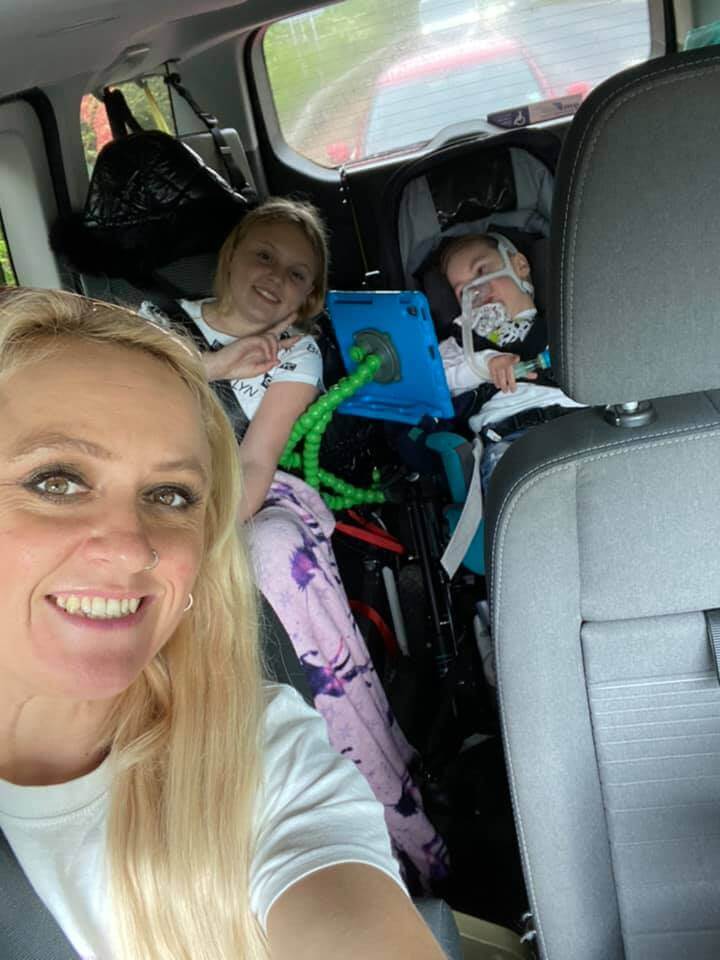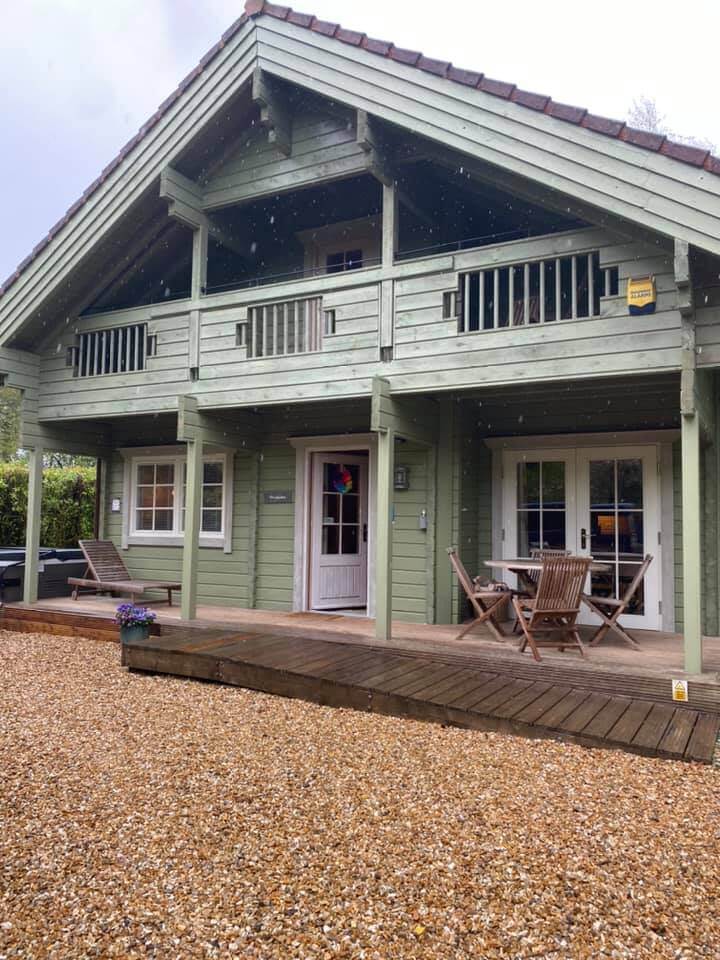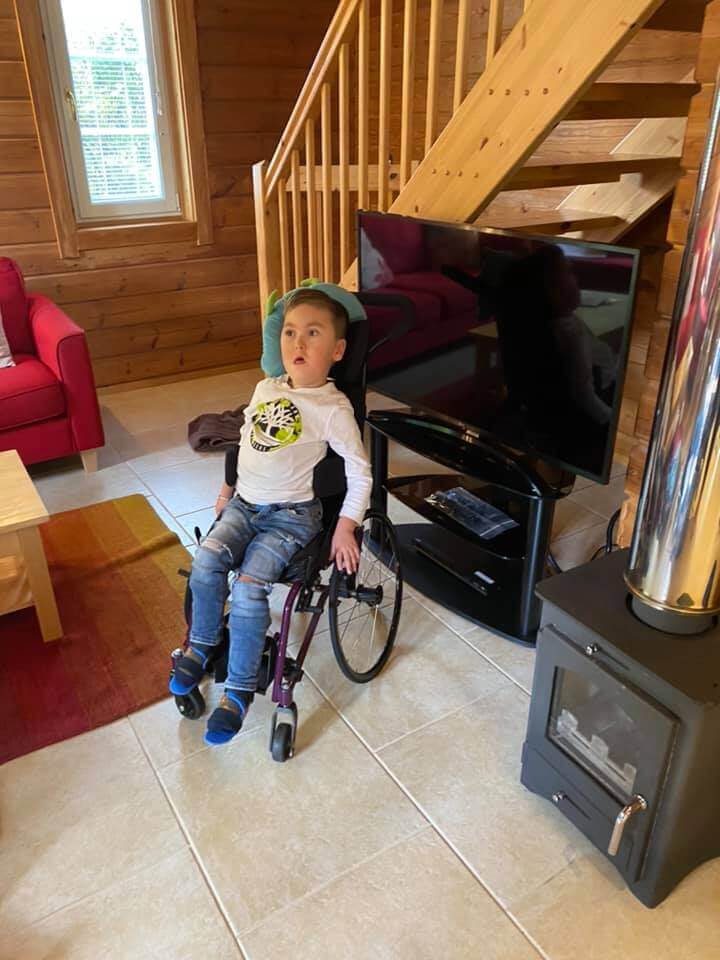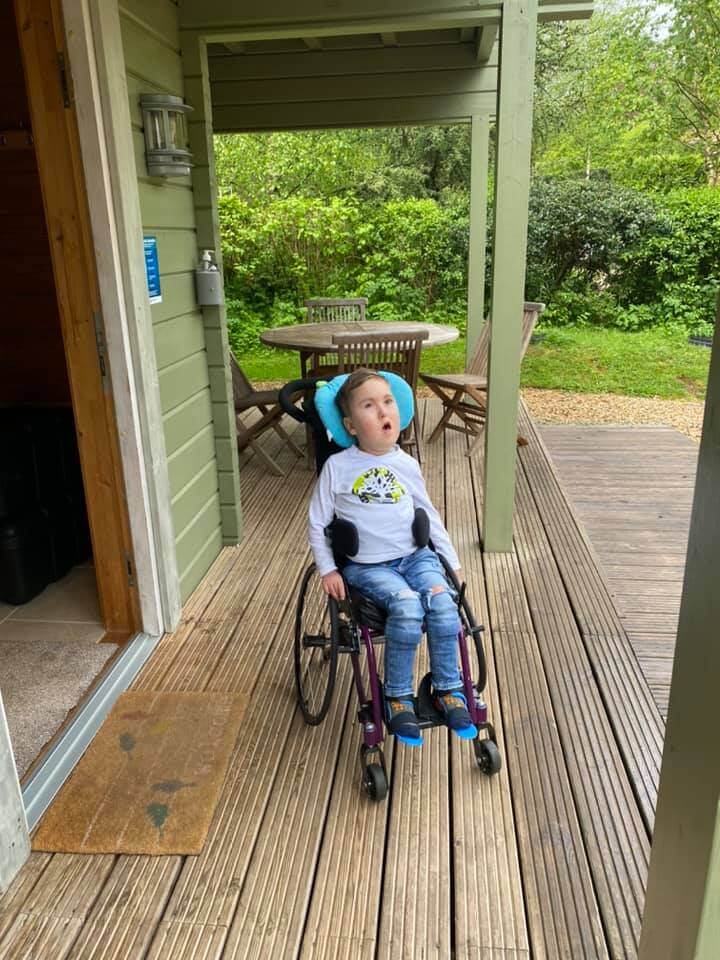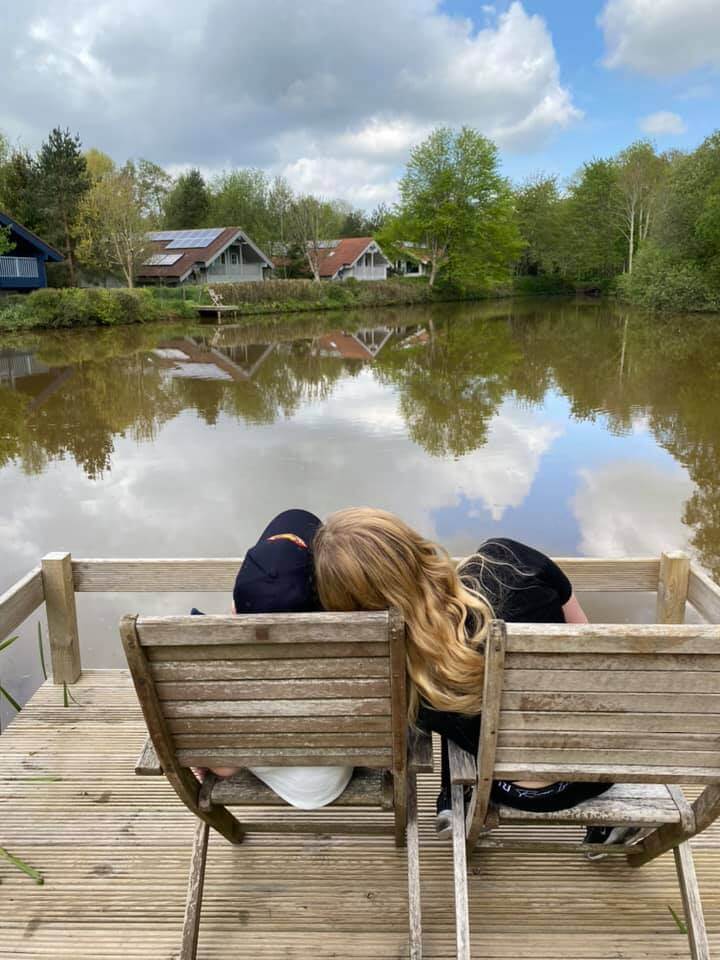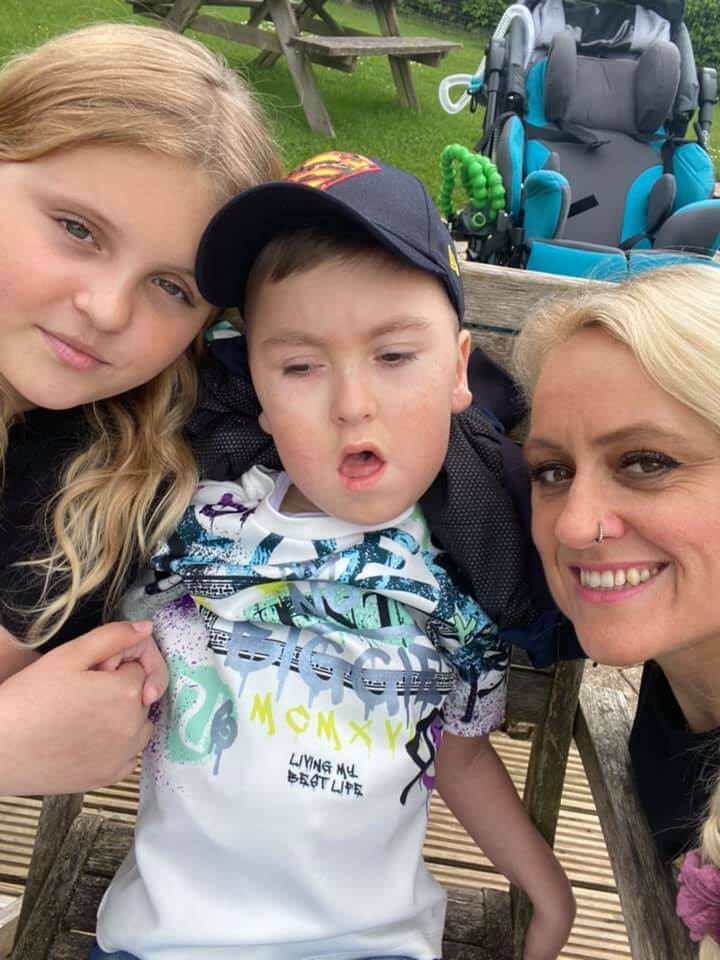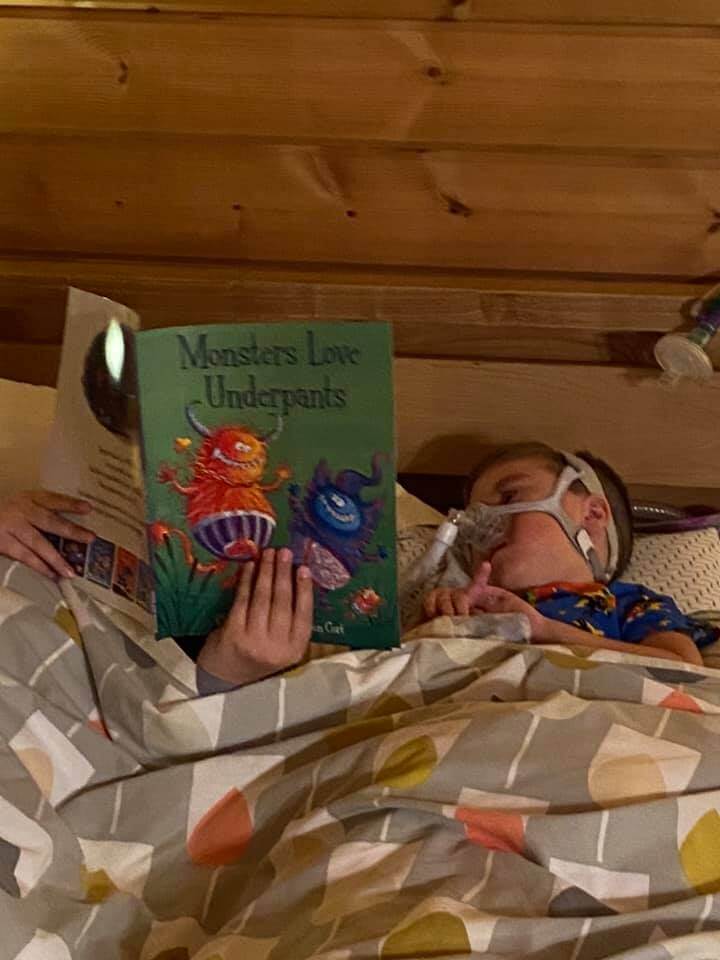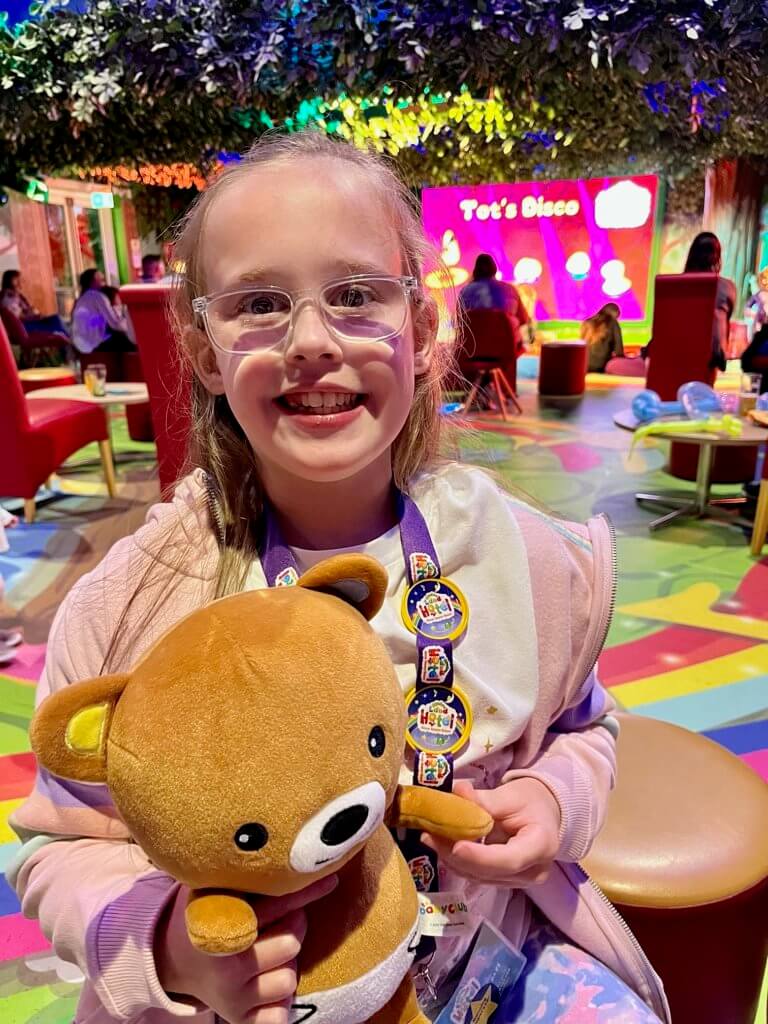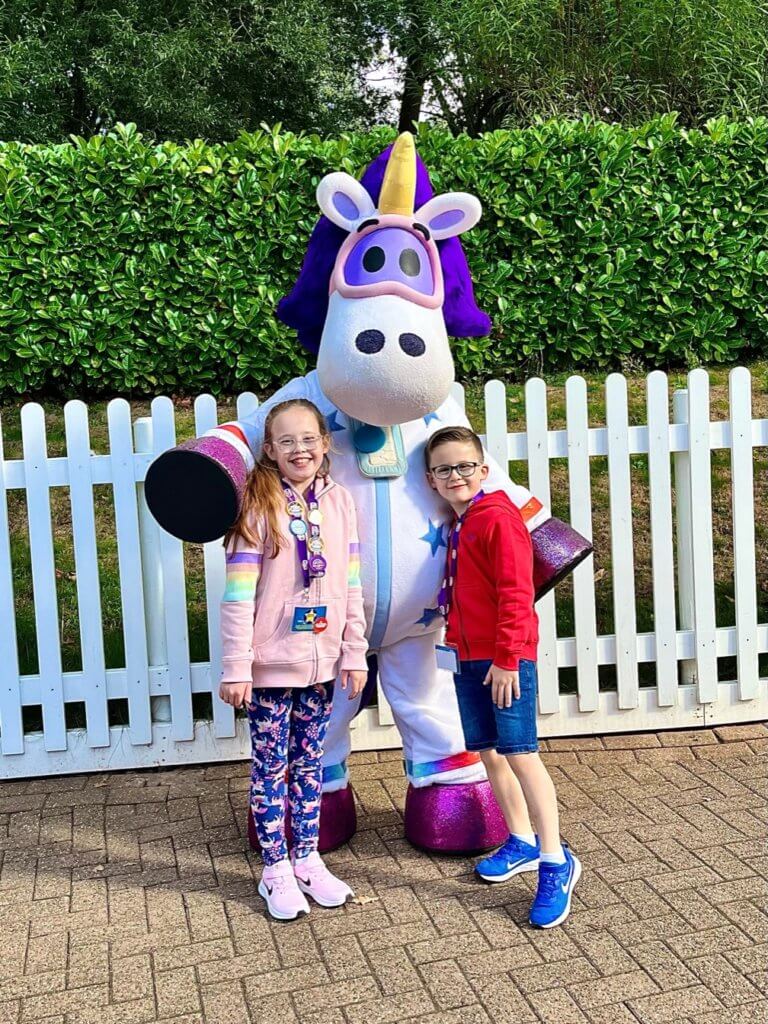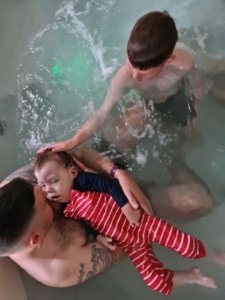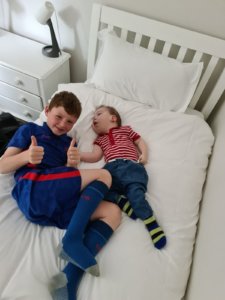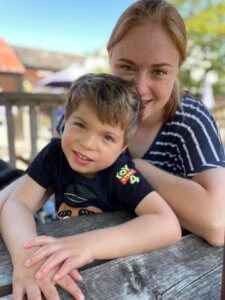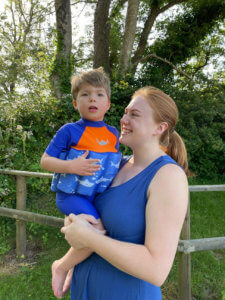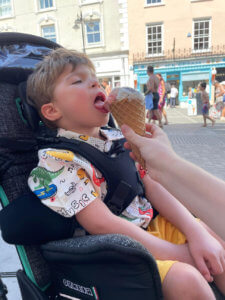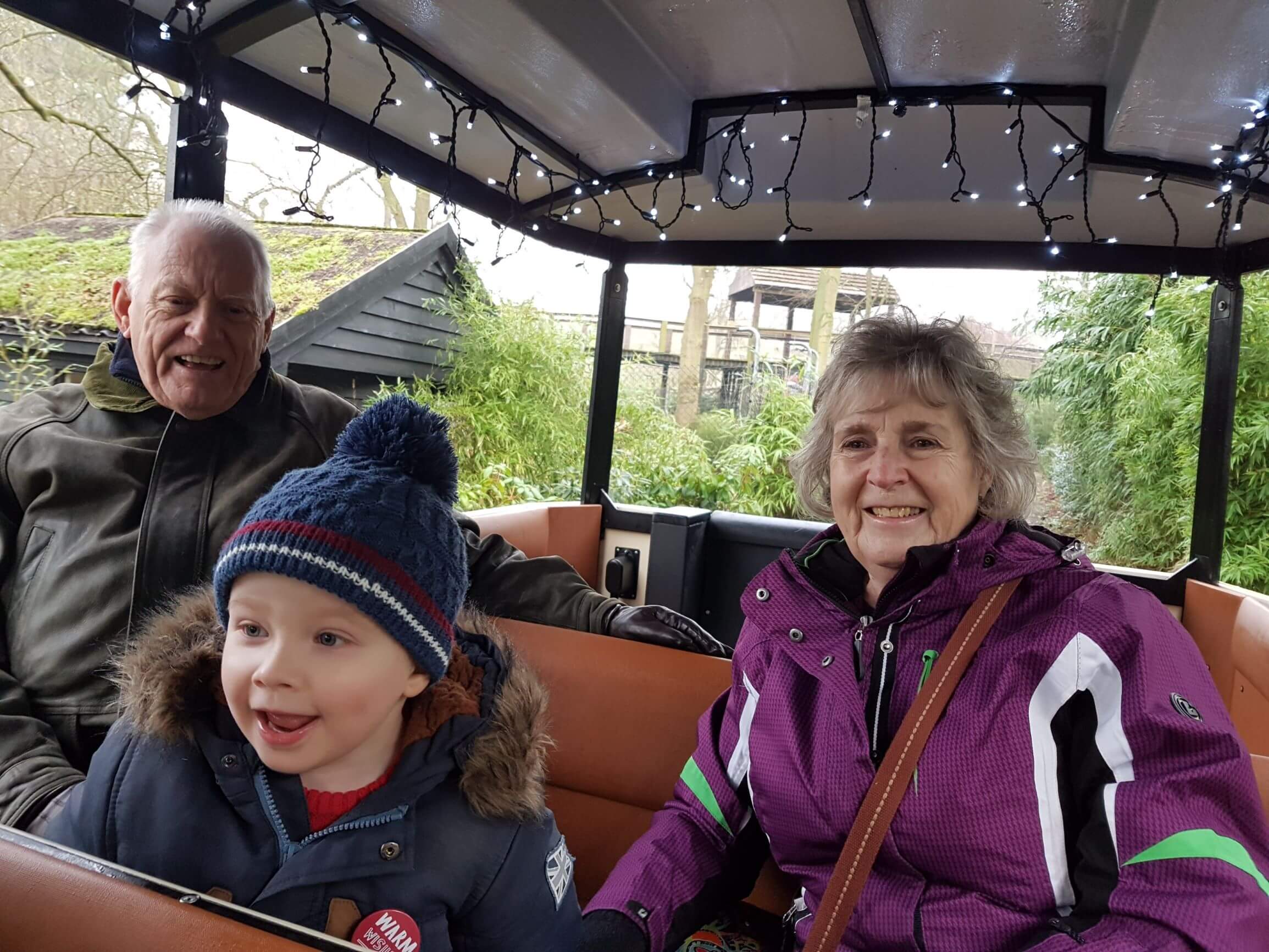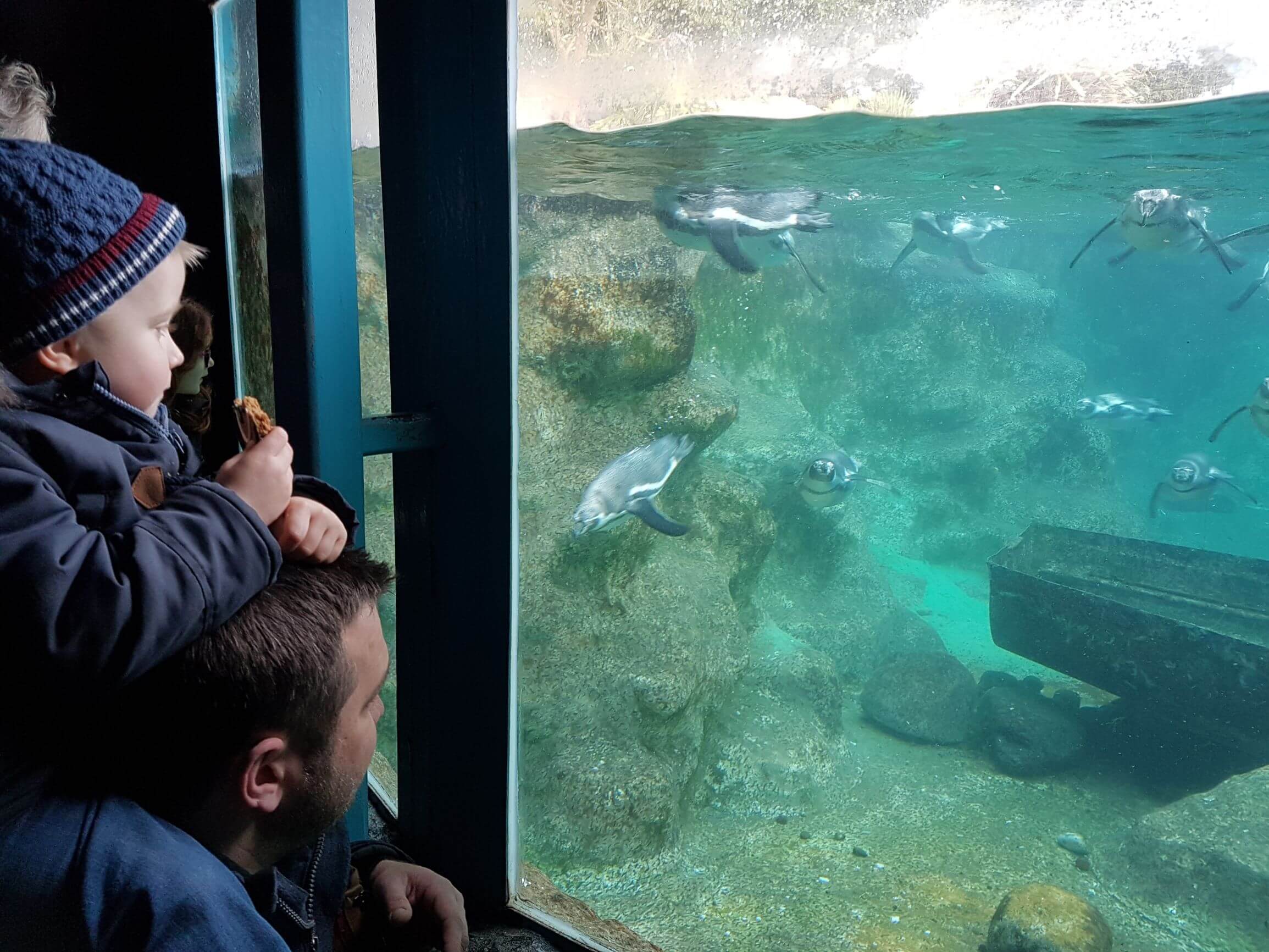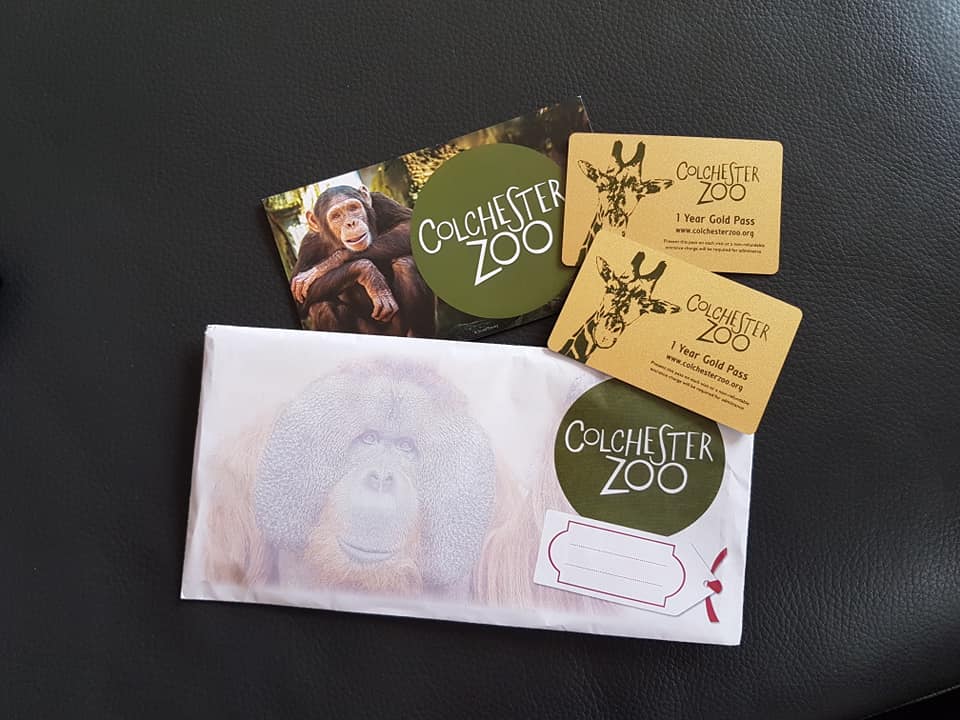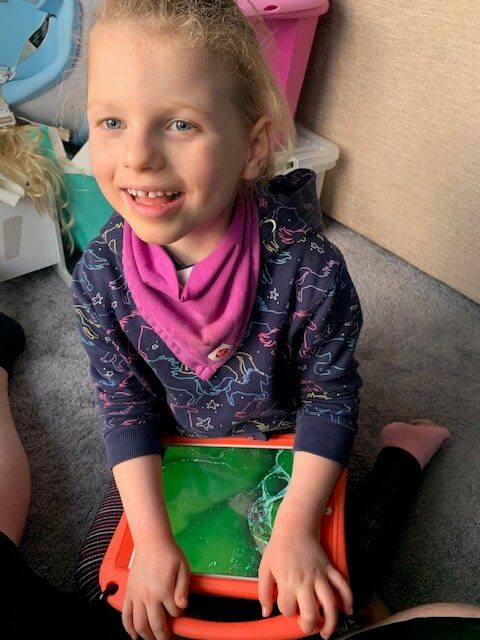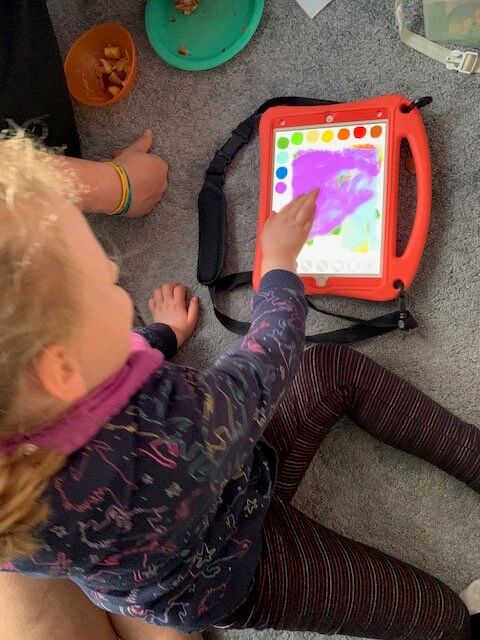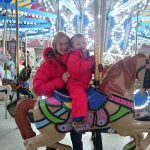
Felix’s Story
“In 2012 our third son Felix was born. At only 2 weeks old it became apparent that he was struggling to thrive and we were consequently referred to a myriad of specialist healthcare services within the NHS. All of them superbly caring and supportive. Felix remained somewhat of an enigma to all involved in his care and he had become entirely dependent on nasal (NG) tube feeding at a very early stage. In retrospect the constant demands of that time were exhausting even punishing given that we needed to continue as parents to our other two elder boys and as a couple to support each other.
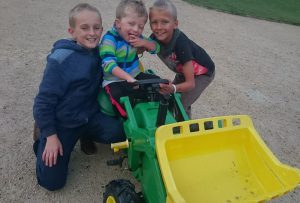
It took until he was almost 18 months old to reach a diagnosis via genetic sequencing. His condition CFC Syndrome is so rare that only approximately 500 cases have been formally diagnosed to date across the whole world.
His diagnosis left us with a huge sense of sadness and isolation, not knowing his life expectancy, or what kind of life he would lead. A Facebook group for families dealing with CFC syndrome has been pivotal in our coping strategy.
The most important thing to help us continue to function and try to cope is care and respite from friends and family. It is often so difficult to perceive the impact of Felix’s disabilities on our other two children and on us as parents and as a couple. Times are sometimes quite bleak with continued sleep deprivation and his relentless healthcare appointments on top of his inability to walk or eat solid food.
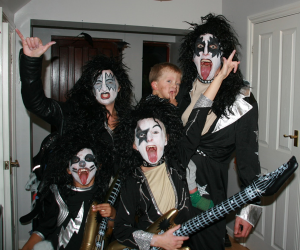
We live day to day with huge peaks and troughs in our ability to function and cope but look forward to small pleasures such as days out and trying to build memories for all of our children.
The Sandcastle Trust was introduced to us via a family whom we know via the CFC Facebook page.
We were fortunate enough to be offered complimentary tickets on a Polar Express train ride for us all via the charity. We had a wonderful evening, with all the children enjoying seeing how magical an experience it was for little Felix.
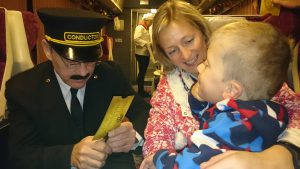
We have a few friends dealing with disabilities and genetic problems such as Down’s Syndrome. Their difficulties are every bit as challenging yet for many genetic conditions there is a community of other people close by. These support networks are immensely important and critical to help parents cope and have some perspective and reassurance. They also offer unexpected friendship and a shoulder to support families in difficult times.
Rare genetic conditions can be extremely difficult to deal with as are all disabilities, but having the cherished moments to look forward to and refer back to is a wonderful gift. Such a simple idea, but so powerful!”
John & Julia Davidson
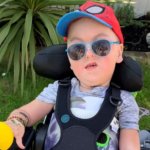
Vinnie’s Story
Kelly Harrison had a normal pregnancy with her second child, Vinnie James. But when her baby son was just four weeks old she noticed his muscles were unusually weak. He had no real strength in his neck and his arms were floppy. Kelly spoke to her health visitor who thought it wasn’t a cause for concern.
Then at eight weeks old, Vinnie had a temperature and was very floppy. Kelly, from New Malden, Surrey, took him to hospital and refused to leave until she saw the lead paediatrician. He was referred for an urgent appointment to St George’s Hospital, London.
A week later, Kelly, 36, and partner Luke James, 37, took their son to see the neuro-muscular paediatric consultant. The doctor diagnosed him on sight with the genetic disorder SMA Type 1. Vinnie was just nine weeks old. Blood tests confirmed the diagnosis a week later.
“I already suspected it was a muscular atrophy or dystrophy,” Kelly recalls. “I was very worried. I had a childhood friend whose daughter had SMA type 2, so I had heard of it before. It was absolutely terrifying. I searched online and found information which said 90% of children with SMA type 1 are dead before the age of two. The doctor told us Vinnie wouldn’t make it to his first birthday. Nothing could be done about it and we should just take him home and love him. It was overwhelming.”
SMA is a rare, genetically inherited, neuromuscular condition which occurs in around one in 10,000 births. It is inherited in an autosomal recessive manner – this means both parents need to be carriers of a mutation in the Survival Motor Neuron 1 (SMN1), for their child to have SMA. There is a one in four chance of a child inheriting the disorder and a 50% chance of a child being a carrier.
There are four main types of SMA. Types 1, 2 and 3 appear in childhood and type 4 is adult onset. The SMN1 gene produces SMN protein which affects a particular set of nerve cells in the spinal cord and brainstem, called the lower motor neurons. These neurons carry messages that make it possible for us to move the muscles we use, to walk, move our arms, hands, head, and neck, and to breathe and swallow. If there is a reduction in the production of SMN protein -as with Spinal Muscular Atrophy- muscles are affected.
Symptoms of SMA are variable but in SMA type 1, the onset typically occurs before six months old. Babies are floppy, due to their low muscle tone (hypotonia) with severe muscle weakness. This muscle weakness affects movement, swallowing and breathing. The brain is unaffected, and children are often described as bright and alert. SMA type 1 is severely progressive.
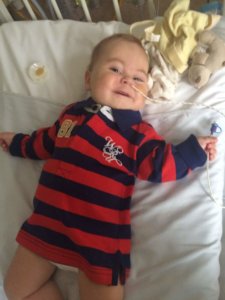
Whilst the family was reeling from the diagnosis, Vinnie was offered a lifeline in a clinical trial of new drug Spinraza, trials of which were ongoing into whether it could halt the progression of SMA. In October 2015, at seven months old, Vinnie joined the Spinraza clinical trial at Great Ormond Street Children’s Hospital, London.
Spinraza aids the production of the SMN2 protein, which is the back-up gene to the SMN1 gene. It helps to stop muscle deterioration and halt the progression of SMA. The drug is delivered via lumbar puncture every 17 weeks. Spinraza was approved for NHS use by NICE in May 2019.
Kelly says: “A month before Vinnie started the trial, we almost lost him as he went into respiratory distress and was very weak. He used a facial ventilator all day and he didn’t move. Now thanks to the drug trial he is off the ventilator for eight hours a day. He has arm and hand movements. He can play with toys, use an iPad and operate his powered wheelchair. It has been amazing. He would probably be dead by now without the clinical trial.”
Vinnie can sit up, supported, however he has lost his swallow function. He has what is known as an unsafe swallow – so he is fed through a tube in his stomach. He doesn’t speak and has tongue tremors. Vinnie started in a special needs school in May 2018 and Kelly stays with him to help with his care. Vinnie sees the neuro-muscular medical team every four months. He has physio both at school and at home.
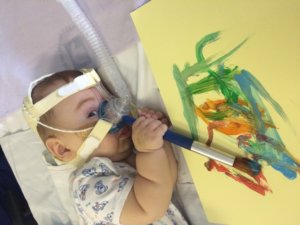
Kelly says: “Vinnie enjoys school. He is intelligent and knows his numbers, colours and shapes. He needs stimulation as he gets bored quite easily.
 “Caring for Vinnie is a 24 hour, seven days a week job. We live in a flat and I carry Vinnie up 15 steps, with no lift, to get to our flat. I take him on my daughter’s school run. We have overnight nursing every night, and Vinnie is ventilated and fed overnight. I get to sleep but I don’t sleep well. When he is on his ventilator, he doesn’t need to have his airways cleared. Off the ventilator he can aspirate on his secretions if we do not stay on top of clearance. He has reflux and when that is bad, we have to suction his secretions more.”
“Caring for Vinnie is a 24 hour, seven days a week job. We live in a flat and I carry Vinnie up 15 steps, with no lift, to get to our flat. I take him on my daughter’s school run. We have overnight nursing every night, and Vinnie is ventilated and fed overnight. I get to sleep but I don’t sleep well. When he is on his ventilator, he doesn’t need to have his airways cleared. Off the ventilator he can aspirate on his secretions if we do not stay on top of clearance. He has reflux and when that is bad, we have to suction his secretions more.”
Kelly adds: “We have entered the unknown, we don’t know what the progression of his SMA will be. My biggest worry is if Vinnie gets sick as he can’t cough to clear his lungs. A cold is life threatening to Vinnie, so we have to be very careful and we avoid crowds.”
Thanks to The Sandcastle Trust, Vinnie had a Sandcastle Santa day out at Chessington World of Adventures to meet Santa in 2018. As the trip was scheduled for a quieter time, it meant Vinnie could avoid the crowds.
“Vinnie enjoyed the day out so much,” Kelly recalls. “It was lovely to make memories as a family. Vinnie loves to go out for the day. He enjoys theme parks, fairgrounds, the zoo and woods. He is a real outdoors kid. On the whole he is a happy little boy.”
This year, when lockdown restrictions were lifted and Vinnie no longer had to shield, The Sandcastle Trust arranged for Vinnie and his family to have a short break away together in an accessible lodge in Somerset: “We had such a lovely time!” Kelly recalls. “Vinnie was in and out the hot tub every day, and Kaydee and I some really special and rare girlie time together when Vinnie had gone to bed. We cannot thank The Sandcastle Trust enough, it was wonderful to get away after such an awful year.”
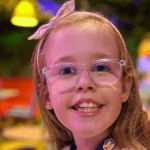
Olivia’s story
Ten-year-old Olivia Peterson was born with an extremely rare genetic condition which causes a build-up of ammonia in the bloodstream. It led to her becoming critically ill days after her birth and has left her with life-long health conditions.
Olivia was born healthy in 2012 and her mum Emma took her home from hospital the following day. But by three days old Olivia was rushed to her local hospital very unwell. The new-born rapidly deteriorated and became unresponsive. She needed ventilation and had a multitude of tests and scans, while doctors investigated the cause.
“Tests came back showing Olivia had raised ammonia, a toxic substance we usually excrete in urine,” Mum Emma, 46, explains. “Olivia’s body wasn’t excreting the toxin and the ammonia was accumulating in her blood, it was poisoning her body, but no-one understood why. She was rushed to London’s Great Ormond Street Hospital (GOSH). It hit me how serious it was. I felt numb. All I could do was stroke her tiny head, willing her to live.”
The next day the team at GOSH had a diagnosis; the rare life-limiting condition argininosuccinic aciduria, which affects one in 70,000 people in the UK. It occurs during what is called the urea cycle, where ammonia is produced from the body breaking down protein and the toxin is urinated out. Because of an enzyme deficiency, the ammonia in Olivia’s body had accumulated in her bloodstream, making her critically ill and causing brain damage.
The medical team had to filter Olivia’s blood to get the ammonia levels down quickly. They then needed to find the right balance of milk (protein) feeds and medication to keep her ammonia levels under control.
“We’d been told to prepare for the worst, so at that point we were grateful for anything,” Emma recalls. “We were relieved to finally understand what was wrong and find out there were children living with the condition.”
Olivia spent six weeks in GOSH, but doctors were unsure what the future held and whether she would learn to walk or talk. She did learn to do both and now aged 10 she is thriving, although her learning age is around half her chronological age, and she has epilepsy as well as autism. To control the urea cycle condition, Olivia needs to stay on a strict low protein diet and medication for life.
Emma says: “Her learning has progressed, and I am so proud of her. She is in Year 6 of a mainstream school, with a 1-2-1 assistant, doing work at her level. It will be so wonderful when she starts in a special needs school for Year 7 as it will be more suited to her needs.
“We have absolutely no idea how long we have with Olivia. If the ammonia levels get too high, it can be life threatening. She is also more susceptible to bugs, especially sickness bugs. You can’t leave Olivia on her own as she can have a seizure. She used to have tonic clonic seizures every two weeks but anti-convulsant medication has reduced the frequency. With all the trauma I promised I would try to balance out the tough times. Family time is like gold for us.”
Day trips are difficult with Olivia, as she can’t cope in busy environments and as Emma is a full-time carer for Olivia, she is limited in the treats she can afford for Olivia and her brother Jacob, seven.
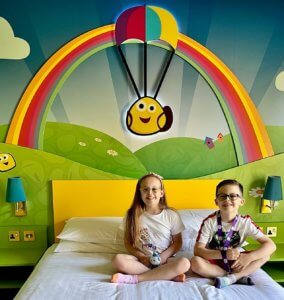 The Sandcastle Trust wanted to help the family create those special memories with Olivia, through their Sandcastle Memories programme. The programme offers respite for families living with a rare genetic condition in the form of UK breaks and days out. The charity arranged a weekend away to CBeebies Land with a two-night stay at the CBeebies Land Hotel.
The Sandcastle Trust wanted to help the family create those special memories with Olivia, through their Sandcastle Memories programme. The programme offers respite for families living with a rare genetic condition in the form of UK breaks and days out. The charity arranged a weekend away to CBeebies Land with a two-night stay at the CBeebies Land Hotel.
Emma says: “It was a beautiful sunny weekend; it was quiet and there were no long queues for the rides. It was absolutely wonderful and it was something we just couldn’t have afforded to do without The Sandcastle Trust.
“The hotel caters for children with learning difficulties, and they were great with Olivia. We stayed in a themed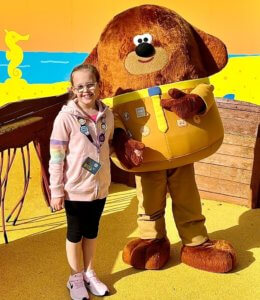 room, which the children loved, then watched the character shows in the evening. It was all very interactive and Olivia was able to meet the characters and have photos taken. She hugged and had photos with them all. She loved it and she did things I’ve never seen her do before – Olivia was dancing her socks off with the character Hey Duggee.”
room, which the children loved, then watched the character shows in the evening. It was all very interactive and Olivia was able to meet the characters and have photos taken. She hugged and had photos with them all. She loved it and she did things I’ve never seen her do before – Olivia was dancing her socks off with the character Hey Duggee.”
Emma adds: “At CBeebies Land itself we went on the rides and Olivia was able to go on a rollercoaster for the very first time. We also visited the Sea Life Centre there and Olivia stroked a starfish. She was fascinated by the fish in the aquariums.”
Olivia’s brother Jacob also benefits greatly from day trips out together as a family.
“It’s hard to see the impact on Jacob,” Emma adds. “He gets really upset if he hears Olivia is unwell at school or having a seizure and needing an ambulance. He’s seven but he’s more like the big brother.
“It’s about making precious memories for the two of them. We also recently went to Willows Farm as part of the charity’s Sandcastle Santa programme. Olivia met Santa and he couldn’t have been more real for her, with elves and a winter wonderland. It was magical.”
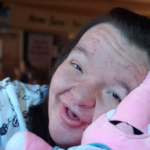
Amy’s Story
Amy Moses is 25 and was born with the rare genetic condition Coffin Lowry Syndrome (CLS), which causes complex needs.
Amy lives with her parents Kerrie Thomas, 44, and Dad Nigel Moses, 51, in Gwent, Wales. When Amy was six weeks old, Kerrie saw her doctor, worried their new-born was floppy and couldn’t lift her head.
Paediatric referrals and an MRI scan followed, but it took two years for Amy to be diagnosed with CLS; her case had to be referred to geneticists in America who confirmed she had an alternation in the X-linked RSK2 gene. Tests showed Kerrie and Nigel were not carriers and Amy’s case was a one-off occurrence. Because of the continuous level of care Amy requires at home, the couple chose not to have any more children.
“For the first ten years it was a world of doctors, accessing care and occupational therapy,” Kerrie, who is Amy’s carer, says. “The doctors said they didn’t know what the future held. We never wanted to know what her life expectancy would be. Amy has learning difficulties, mobility problems, low muscle tone, incontinence, anxiety and significant speech and language delay. She also has double curvature of the spine and autism.
“Amy’s health is declining more now and it’s sad to look back at how quickly she has declined. She used to be able to walk, she could even take part at sports day at her special needs school. But now her health is worse, her eyesight and hearing are worse. Her mobility is the biggest deterioration, and she uses her wheelchair a lot of the time. She has ‘drop attacks’ where she falls to the floor, which can be so dangerous. I need to watch her all the time and I can’t leave her on her own, even to go to the toilet as she might fall and hurt herself. The drop attacks can be one after the other and can be up to 15 times a day.”
The family had a recent scare with Amy rushed to hospital struggling to breathe. She was diagnosed with sepsis, which is an increased risk for Amy as she has a compromised immune system.
When Amy reached adulthood, the family found her health needs increased just as the support they received diminished.
“As soon as your child reaches 18 or 19, all the support goes,” Kerrie explains. “Amy had an amazing paediatrician; she was under a spinal surgeon and an occupational therapist. Then at 18 that was all gone. When people say, ‘you are complaining again’, well yes, we are complaining again. We are ok, Nigel and I make a good team, but more support needs to be given to families on their knees.”
Kerrie adds: “Amy has a lot of challenges, but I don’t tend to look at the negatives. She is a happy young lady, and we focus on the special memories we can make together as a family.”
The Sandcastle Trust wanted to help the family create those special memories with Amy, through their Sandcastle Memories programme, which offers respite for families living with a genetic condition, in the form of UK breaks and days out. The charity arranged a holiday to an adapted holiday park for Amy’s family, but unfortunately it had to be cut short after one night as Amy became very unwell. The Sandcastle Trust then arranged for Amy to see her favourite TV children’s personality, Justin Fletcher, on stage in Cardiff.
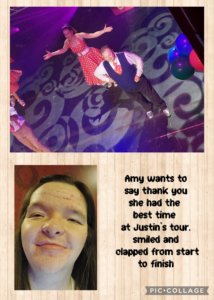 Kerrie explains: “We were so deflated after having to come home early from the holiday. We were looking forward to the hydrotherapy and the sensory room, but she was very poorly. When Sandcastle called and said they wanted to help us again, I cried.
Kerrie explains: “We were so deflated after having to come home early from the holiday. We were looking forward to the hydrotherapy and the sensory room, but she was very poorly. When Sandcastle called and said they wanted to help us again, I cried.
“Amy really wanted to see Justin Fletcher. It was a win for Amy, she was so happy, and we were upgraded to a box! She was smiling when Justin was onstage, shyly waving to him, then Justin looked up and he waved at Amy. If smiles were measured in pounds, we were millionaires that day. It was absolutely wonderful. The memories mean everything.”
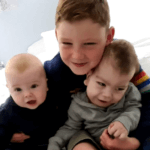
Reuben’s Story
Sophie Byrne’s favourite picture of her sons shows them splashing around happily in a pool in Devon.
Her middle son Reuben’s eyes gaze up at his older sibling, Harry, a look of pure happiness and brotherly love is captured on his face.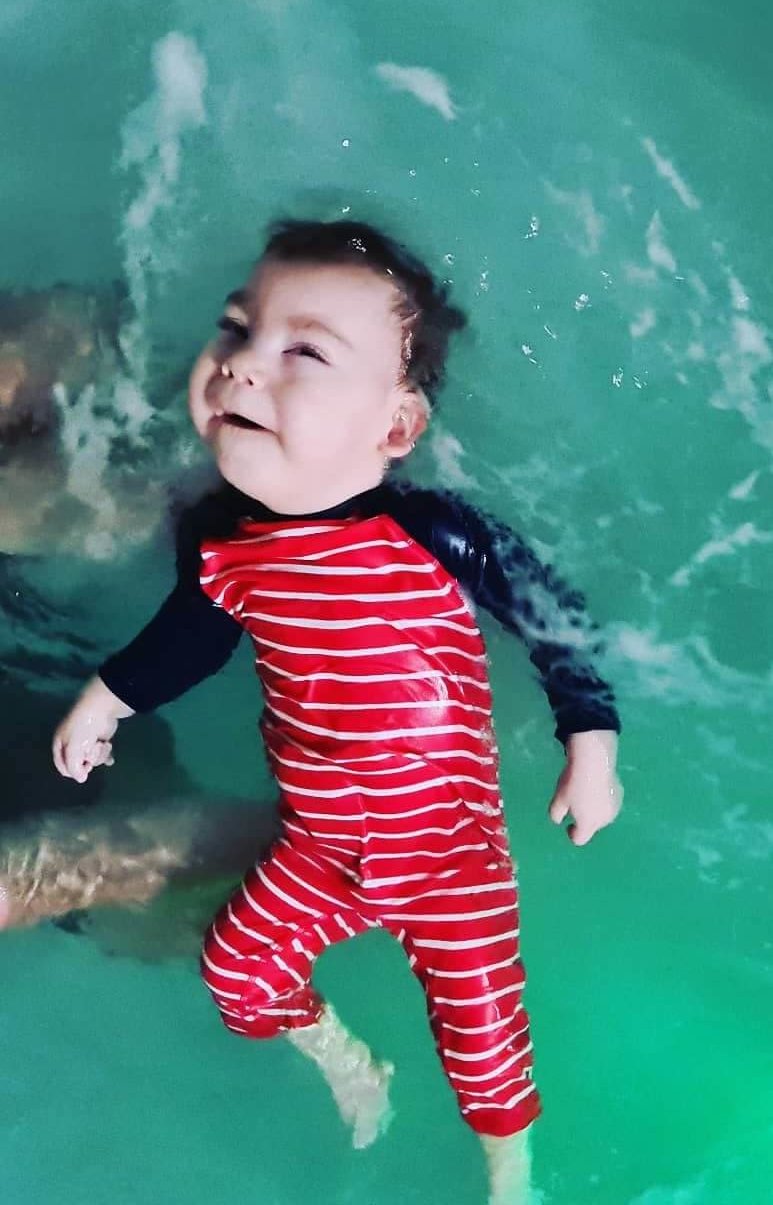
For Sophie this image is even more precious because four months after the joyful picture was taken, Reuben passed away.
Sophie, 30, says: “Reuben passed five days before Christmas, he was two.
“We feel so lucky to have had that time away with him as a family. All our favourite photos of Reuben looking happy are from that holiday.
“He absolutely loved the pool and came alive when he was in there.”
She adds: “Reuben had his own little character, when you got a smile or laugh out of him we felt as much joy as you would if a child had taken their first steps or ridden a bike. If he was having a cuddle he’d look up to you, he’d lock on to your face with his eyes momentarily and give you the biggest smile.”
Sophie and her husband Sean, 35, an army officer, had experienced loss before. Their first child Olivia was born in 2012 but died from the same genetic condition as Reuben at just eight months old.
Sophie, from Larkhill, Wiltshire, says: “Doctors told us lighting doesn’t strike twice but they didn’t know Olivia’s condition back then.
“Harry was born in 2014 and was fine. On the day Reuben was born they told us lightning had struck twice he had the same thing. Just three weeks later they discovered the faulty gene that had caused both children’s disabilities and told us both Sean and I were carriers.
“There was a one in 25 million chance of that happening and only 20 known children with the same faulty gene. I remember them saying most babies born with the condition don’t live past their first year.”
Reuben and Olivia shared the same symptoms: complex needs, seizures, and physical differences like a high palate.
When Sophie and Sean realised Rueben’s life would be short, like Olivia’s, they decided to have another baby, another sibling for Harry because losing his beloved brother would be so devastating for their older son. Felix was born healthy in 2021, after tests in the womb showed he did not have the gene.
Sophie says: “When we approached the Sandcastle Trust we knew our three boys might not have long together. The organisers said they would be able to arrange an autumn half term break but when we explained Reuben might not live that long, they pulled out all the stops to sort a holiday cottage in August, 2021. I will always be grateful for that.”
The family spent an idyllic week at the cottage in Devon.
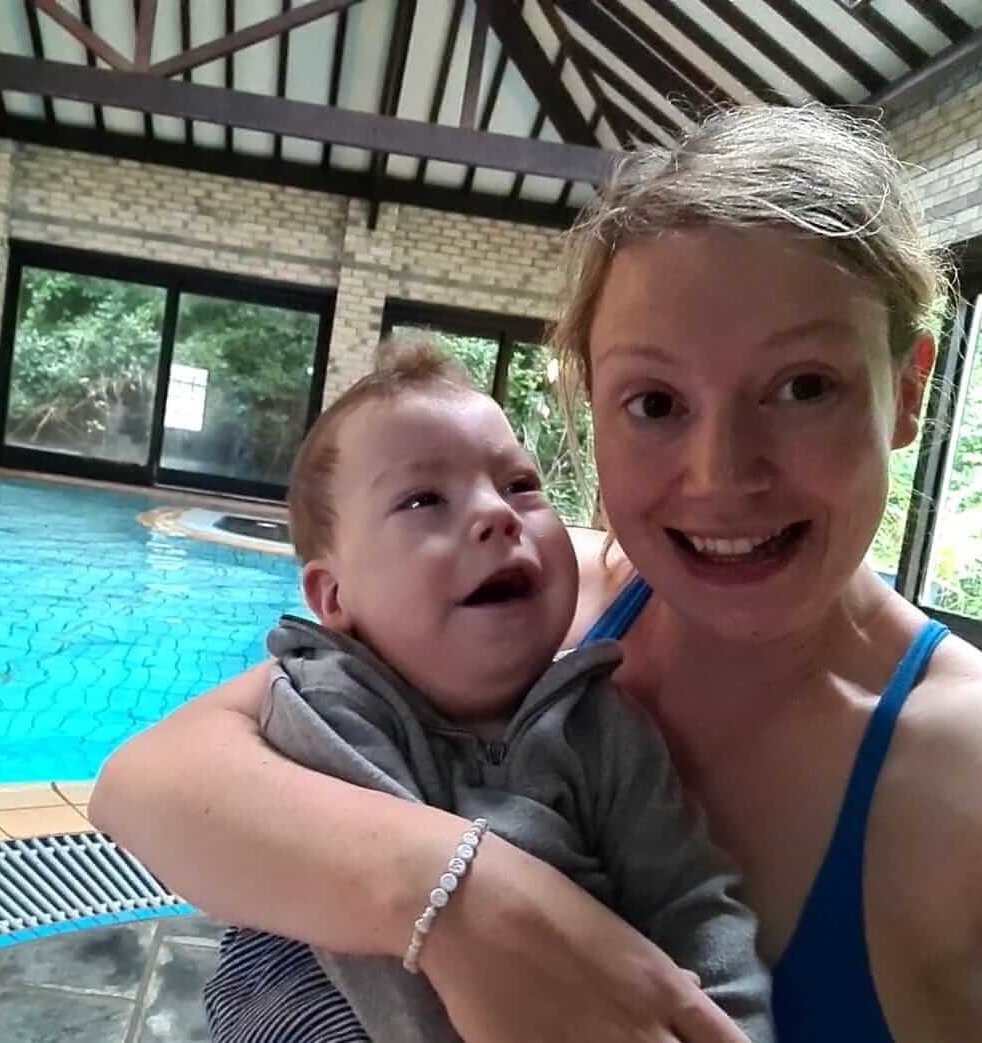 Sophie says: “It was just perfect, the dream holiday in the UK. The house felt like a mansion and was set in an acre of land, it was so quiet and peaceful, perfect for Reuben.
Sophie says: “It was just perfect, the dream holiday in the UK. The house felt like a mansion and was set in an acre of land, it was so quiet and peaceful, perfect for Reuben.
“You could book the shared pool so we had it to ourselves. Reuben had only been in the water once or twice before at his children’s hospice. He was so happy in there, kicking his legs. He loved the swing too.
“Felix had his first swim and Harry had loads of space to ride his bike and could go to the beach with Sean.”
Harry took it upon himself to swim a mile around the pool to raise money on behalf of Reuben. “The love he has for Rueben is so strong.”
Looking back, Sophie says: “The life Reuben had was lovely, everything he experienced, everything he did, particularly our holiday in Devon, were special. He was an absolute joy, we learned so much from him.
“Holding someone’s hand would make him happy. Something that simple is overlooked. He made us appreciate the real basics. He would cry if you put him down because that cuddle meant so much to him. And he would speak through his breathing, it would become faster paced if he was happy.
“Having Olivia and Reuben makes all of us appreciate life so much.”
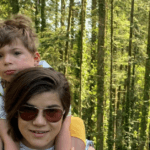
Freddie’s Story
Little Freddie Skinner didn’t have a voice until he was two.
When he was just five weeks old doctors cut into his windpipe and inserted a tube, to help him breathe. While the procedure gave him life, it took away his ability to speak.
Mum Laura says: “When he had the tube removed two years later, Freddie could suddenly vocalise. It was the first time we heard him properly, apart from his very early cooing and crying. I remember him making that first noise – an excited squeal. Then, because he realised he could do it, he did it more and more. To hear him giggle was such a joy.
“We took him to a restaurant near the hospital for lunch and he was so loud squealing away happily. We both cried with happiness.”
Freddie’s giggle and squeal were heard in full effect when Laura, her wife Emma, and their son, now three, visited Bluestone National Park Resort in Wales, in July, courtesy of the Sandcastle Trust.
Laura, 29, from Norfolk, said: “We took Freddie swimming for the first time. He went crazy, Cooing, squealing and kicking his legs.
“We went to a nearby theme park where we discovered Freddie is an adrenaline junkie. He loved the big pirate swing, the sensation of it.
“It was a perfect holiday because it was our first break for just the three of us, without carers. We didn’t have the stress of appointments. It was so simple and enjoyable and we really saw Freddie’s confidence and his personality coming out.”
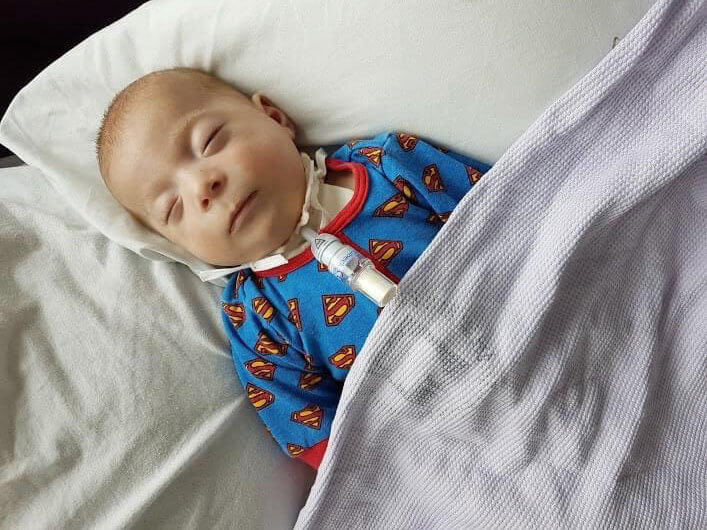 Freddie was born to Laura, a medical student, and Emma, 31, a support worker, at Norfolk and Norwich University Hospital in December 2017.
Freddie was born to Laura, a medical student, and Emma, 31, a support worker, at Norfolk and Norwich University Hospital in December 2017.
Laura recalls: “It was a normal pregnancy but straight away he struggled to breathe. He was rushed to the neonatal intensive care unit. They said he had “dysmorphic features” and that he probably had Down’s syndrome. The doctors gave us leaflets about Down’s. But a few days later blood tests ruled that out.
“While we were in hospital he struggled to breathe a couple of times but never when staff were around. When we raised it, it felt like staff thought we were being over-anxious.
“Freddie was our first child, we left hospital thinking that was normal. I remember sitting in a cafe, Freddie went blue and I said to my friends, don’t worry he does this all the time.”
But the breathing episodes became longer and more frequent. Emma and Laura took Freddie in and out of hospital insisting he was going blue and floppy and struggling to breathe but he never did it in front of medics.
Freddie’s health visitor was the first professional to take the couple seriously. She insisted their son was seen in the hospital.
Laura says: “They did a sleep study and counted that he had 1200 apnoeas – where his breathing would temporarily stop – in one night. You could see his muscles were trying to make him breathe but no air was going in. He would turn blue and appear limp. Then finally his airway would open and he’d take a big gasp.
“Although it was horrific to hear how many episodes he was having, it was reassuring that medics realised we had been right all along.”
Freddie was transferred by specialist ambulance to Great Ormond Street Hospital for Children (GOSH) in London. It was there that doctors decided on the tracheostomy.
“We were not keen,” says Laura. “But they explained his life depended on it.”
Freddie, still only weeks old, stayed in intensive care with Laura staying in parents’ accommodation. Emma travelled to and from Norwich.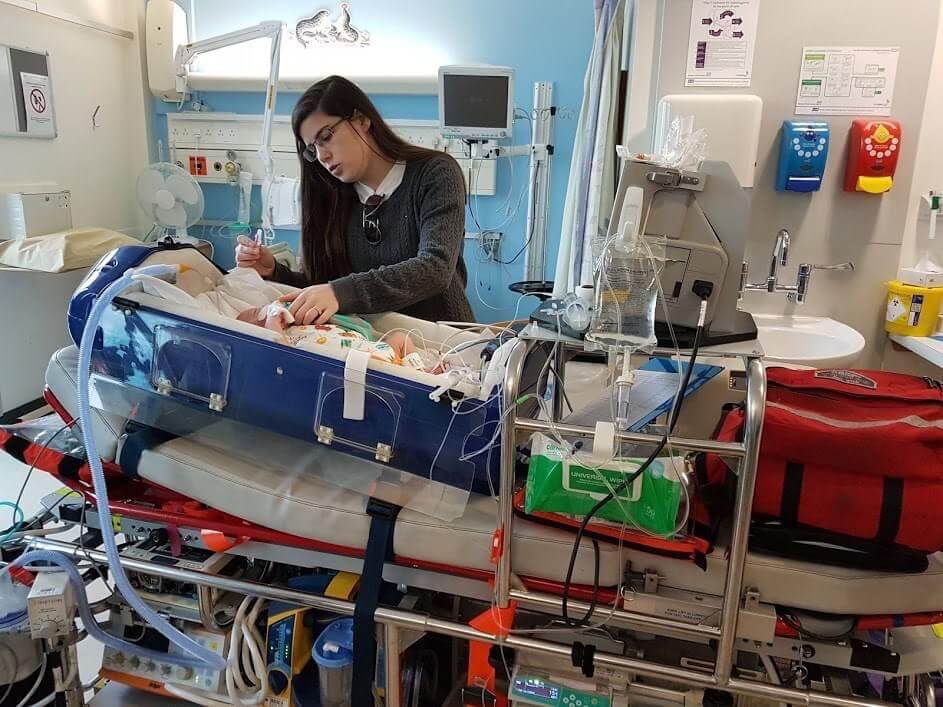 The couple were trained in managing the tubing in Freddie’s airway and were told they would have to have carers at home to help.
The couple were trained in managing the tubing in Freddie’s airway and were told they would have to have carers at home to help.
They were also given a diagnosis for Freddie. He had a rare chromosome deletion. It meant he would have global development delay and physical disabilities.
“I am training to be a doctor, I knew the severity of what they were saying.
“It’s not what you imagine when you have a baby,” Laura says. “It made building a relationship with Freddie harder. Because you have to watch your baby being held down and having blood taken you disconnect to protect yourself.
“It took a while for me to feel like a mum rather than a professional.”
She adds: “We had a fabulous nurse at GOSH, Jo. We owe her everything, she told us not to treat Freddie differently just because he had a trach. She came with us out of the hospital to prove the point.”
After a few weeks back in Norfolk hospital waiting for a package of care to be arranged, Freddie and his mums went home.
Laura says: “We got to know him again. He is hilarious, really smiley and fond of people. He has a big heart and loves to mimic people.
Laura noticed the Sandcastle Trust on Facebook and applied for a break. “They were absolutely lovely. You get such personal attention and nothing is too much trouble. “The Bluestone holiday came at just the right time. With Freddie’s tracheostomy removed and the carers gone we could be a real family, just make memories and revel in the sound of his giggles.”
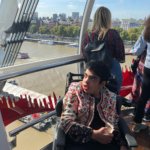
Sannah’s Story
Sannah Fayyaz was 24 when she first visited London on a trip her family will never forget.
Sannah, from Burnley, Lancs, has San Fillipo disease which, over 14 years, has slowly robbed this vibrant young woman of her abilities.
But mum Feeraz says her daughter loves the hustle and bustle of cities and is a real foodie, so a trip to the capital was a dream come true for them and dad Muhammad and sister, Ummul, 20.
Feeraz, 49, a care manager, says: “Ummul had been to London and thought it would be great trip for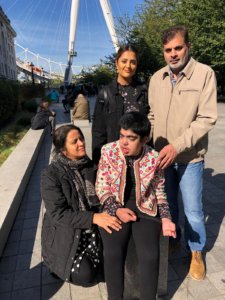 Sannah. But Sannah has to have two people caring for her at any one time and is a wheelchair user. To take the family and a carer to London would have been really expensive.
Sannah. But Sannah has to have two people caring for her at any one time and is a wheelchair user. To take the family and a carer to London would have been really expensive.
“Sorting out wheelchair accessibility and travel around London would mean lots of organising.
“The Sandcastle Trust took all that worry off of us.
“We felt they really understood Sannah’s needs and what would work for her. They were so enthusiastic about suggesting things too.
“We went on the London Eye and on a cruise of the River Thames. Sannah got to have a picture with her favourite Bollywood star, Salman Khan at Madam Tussaud’s.
“The hotel was perfect and we didn’t have to keep explaining our needs, everyone just got it.
“The fact the Sandcastle Trust organises breaks for families of adults as well as children is really important. You don’t stop caring when your child reaches 18.
“The trip was something we will always remember away from the chaos of everyday life, a chance to really be a family.”
At three years old Sannah was like any other child.
Feeraz recalls: “When she was three she could count to 20. She could sing nursery rhymes and was potty trained.
“We thought she had asthma and would attend a clinic for that. At a check-up when Sannah was three her doctor noticed her tummy was larger than usual and she had a glue ear and snotty nose. He did some tests. Three months later we went back to the asthma clinic to be told she had the degenerative genetic disorder San Fillipo.”
She now has profound mental and physical difficulties. But Feeraz describes her as “a very happy young lady.
She says: We don’t like to think Sannah is defined by San Fillipo, every child is different.
“She loves her food, she will try anything. We always have to puree it so we take a machine with us everywhere.
“She loves going to Manchester and looking at clothes in the Trafford Centre. She enjoys having her nails painted and her hair done, which her carers do for her when they are at our house. She loves music too, it’s always blaring away.
“I imagine if Sannah didn’t have San Fillipo, Ummul and her would be out and about together and I would never see them. Sannah loves going out but she always has to come home. This trip enabled them to explore London together.”
Feeraz concludes: “Everything in my life revolves around Sannah. I just want to make sure she is happy, comfortable and safe and she can do all the things she wants to do.
“If she’s not well, I’m having a bad day. If she’s happy I’m on top of the world.”
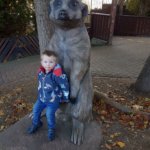
Henry’s Story
“Henry is three years old and has the rare genetic disorder Diamond Blackfan Anaemia. This means that his bone marrow does not function correctly leaving him reliant on blood transfusions every 3-4 weeks to stay alive.
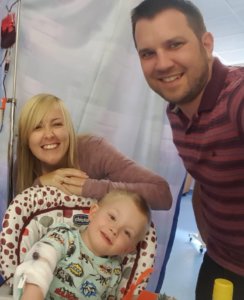
We found out that Henry was poorly at our 12-week pregnancy scan, he had an increased nuchal measurement at the back of his neck and a lot of excess fluid surrounding his body. At that point, we had the option of having genetic testing or a termination and we were told that there was an 80% chance Henry would not survive. We opted for an amniocentesis, which revealed he had none of the more common genetic disorders and doctors could not give us a diagnosis, so we continued with the pregnancy.
Much to everyone’s surprise, Henry made it to 36 weeks before doctors noticed he was really struggling, so he was born via emergency c-section four weeks early. He was extremely poorly when he was born; he had to have two immediate blood transfusions, was placed in an induced coma and ventilated. He spent three weeks in the NICU and has been blood transfusion dependent ever since birth. We finally got a diagnosis of DBA when he was three months old following a bone marrow biopsy, which was confirmed by genetic testing a few months later.
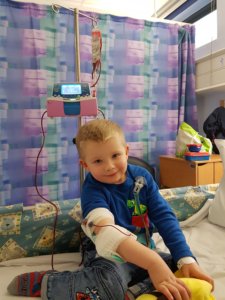 Henry has had almost fifty blood transfusions in his life. Each blood transfusion he has deposits iron into his body which is fatal if left untreated, so we have to insert a needle in his leg or tummy every night and connect him up to a medication pump for twelve hours overnight to strip the excess iron from his body. He’s very resilient but he really dislikes having to be hooked up to the pump! Before a blood transfusion he gets very tired, pale and emotional, he is usually very even-tempered but the smallest thing will make him cry when he’s running low on blood. The transformation after a transfusion is like night and day, he is full of energy and Henry is old enough now to tell us that it makes him feel so much better. Because Henry is towards the severe end of the spectrum for the disorder, he is due to have a bone marrow transplant this year. He will have a week of chemotherapy to knock out his faulty bone marrow prior to the transplant and will then have three months in isolation in hospital followed by up to a year’s isolation at home while his immune system recovers.
Henry has had almost fifty blood transfusions in his life. Each blood transfusion he has deposits iron into his body which is fatal if left untreated, so we have to insert a needle in his leg or tummy every night and connect him up to a medication pump for twelve hours overnight to strip the excess iron from his body. He’s very resilient but he really dislikes having to be hooked up to the pump! Before a blood transfusion he gets very tired, pale and emotional, he is usually very even-tempered but the smallest thing will make him cry when he’s running low on blood. The transformation after a transfusion is like night and day, he is full of energy and Henry is old enough now to tell us that it makes him feel so much better. Because Henry is towards the severe end of the spectrum for the disorder, he is due to have a bone marrow transplant this year. He will have a week of chemotherapy to knock out his faulty bone marrow prior to the transplant and will then have three months in isolation in hospital followed by up to a year’s isolation at home while his immune system recovers.
We know that this will be a difficult time for us as a family but if it works, it will mean Henry will be able to produce his own blood so will no longer need blood transfusions or the nightly pump!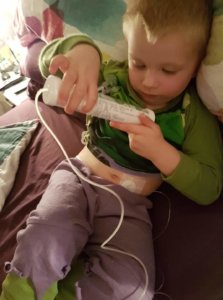
Henry’s illness has put a lot of strain on us as a family. I had to quit my job to care for him so we were immediately down to one income and there’s no real way of describing the emotional impact of a diagnosis of a chronic, life-threatening illness for your child. The Sandcastle Trust stepped in and supported us in the best way possible, by giving us the opportunity to have quality time together as a family. We were gifted annual zoo passes for our local zoo, not just for us, but for Henry’s Grandparents too as they are such a fundamental part of our family and support us with Henry a lot. I have some health issues myself and knowing that when I’m not feeling up to it, Henry’s grandparents can pop over and take him to the zoo and have a fantastic time while I can focus on myself is priceless. We’ve been to the zoo at least every two weeks since we were gifted the passes, Henry had never been to the zoo before as it would have cost us £80 just for one visit and we simply couldn’t afford it. For him to have been able to go whenever he wants over the last few months and for us to be able to spend care-free time as a family and do some ‘normal’ activities is worth it’s weight in gold to us. Henry goes through so much day to day and the isolation following his impending bone marrow transplant will be incredibly challenging, to have lots of happy family time together now is a brilliant gift. We simply would not have been able to do this without the Sandcastle Trust and are forever grateful for them for their help and support.”
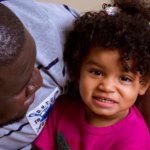
Elisia’s Story
“When Elisia was born in April 2015 as far as we knew it she was ‘normal’, weighing a healthy 8lb 8oz. She passed all her new-born screening tests and was absolutely gorgeous.
We joined the standard classes and groups making mummy and baby friends at each one. Everything was lovely for the first few months. Then when Elisia was between four and six months a few things started playing on my mind and I wondered why she was not doing as well as the other babies. Everyone kept telling me: ‘all babies are different’, ‘she will get there in the end’ ‘all babies learn at different rates’ etc.
When she reached about seven months old things became more difficult. Taking her to classes and groups became a struggle. Simple questions from other mums upset me, even the standard opening question ‘how old is she?’ made me anxious. I would think they were asking because they had noticed how little she could do. The list of things she should be able to do but couldn’t was now getting long: rolling, sitting unaided or crawling. So, I went to the GP who agreed a referral to a paediatrician was needed.
We had to wait until she was nine months old to get a date for this appointment, so we enjoyed our first Christmas together as a family of three and carried on as usual. We also attended a lot of Elisia’s friend’s first birthday parties. This was difficult – they were all walking or at least standing and walking with a parent whereas we were getting excited as Elisia had just mastered a roll!
When we saw the paediatrician and told him the milestones Elisia had not yet met, he referred us straight away for tests. Bloods were taken that day and an MRI scan booked for the following month. That was such a scary and long day at the hospital for a little girl but she handled it so well. She is a placid and content person.
All Elisia’s tests and MRI scan came back negative. The paediatrician told us he was waiting on the genetics team to get back to him. Everything sounded fine, we made a big sigh of relief. Elisia then had her first birthday in April. She had two parties and we had a little holiday in Butlins – our first family holiday. She couldn’t go on most of the rides but we had a nice time, Elisia absolutely loved the pool.
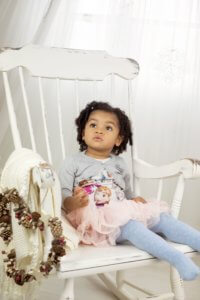 When Elisia was thirteen months old we went back to the paediatrician and were given the devastating news that Elisia had a rare chromosome disorder, 5q14.3 deletion. What even is that?! Even the doctor appeared to know practically nothing and couldn’t tell us much about how our little girl would be affected as he hadn’t come across it before. He downloaded the 5Q14.3 deletion leaflet produced by the charity Unique which explained the condition and then sent us on our way feeling frightened and bewildered.
When Elisia was thirteen months old we went back to the paediatrician and were given the devastating news that Elisia had a rare chromosome disorder, 5q14.3 deletion. What even is that?! Even the doctor appeared to know practically nothing and couldn’t tell us much about how our little girl would be affected as he hadn’t come across it before. He downloaded the 5Q14.3 deletion leaflet produced by the charity Unique which explained the condition and then sent us on our way feeling frightened and bewildered.
Reading the leaflet I was in flood of tears… ‘may not walk till much older if at all, may never talk, prone to autism, epilepsy, hypotonia etc’
I was numb. I tried my hardest not to get too upset or stressed because at this point I was five months pregnant with our second child. I knew I needed to be strong for my unborn child and also be there for my little girl who that same day had further blood tests along with Mummy and Daddy to see if one of us had the same chromosome deletion and had passed this to her. We later found out that it was a ‘de novo’ chromosome deletion which means there was no family history of this genetic change and it appeared in Elisia for the first time.
We went to see the genetics team in Winchester a few months later. We had high hopes that at this appointment someone would finally be able to answer our many questions. However, we were handed the same Unique leaflet that we had been given at the paediatrician appointment! We were told that Elisia seemed to be doing quite well (compared to many of her 5q14.3 deletion peers), she was strong so clearly did not have hypotonia which is one of the most common symptoms with her deletion. We did however find out that within her 5q14.3 deletion she was missing an entire gene – MEF2C. We later found out this is a commanding gene and explained many things. She seemed to show more similar traits with people who had an issue with MEF2C rather than just a 5q14.3 deletion.
We then found the MEF2C group on Facebook and I can honestly say I feel like I am now part of a global family. This group is small group – 273 members, so I feel like I know many people quite well. We support each other, pick each other up and no matter the time of day (if Elisia is not sleeping at 2:00am or we are in hospital and I cannot sleep for instance), one of the other group members on an opposite time zone e.g. Australia or America will talk to me, support me and cheer me up.
When Elisia was seventeen months old, her baby brother was born. As I had to have a c-section, for the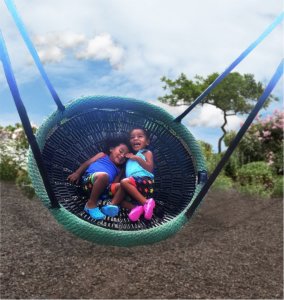 first twelve weeks we had visitors every day and we had lots of support. Then followed some of the loneliest and darkest days of my life. It was winter and I struggled to leave the house with both babies as I couldn’t carry them at the same time. The visitors became few and far between and the days were long and hard. Then the second birthday invites started to roll in. I felt pleased that Elisia was still being included but also extremely anxious about the fact that she was VERY different to her peers now. She was still a ‘baby’ and they were all clearly ‘toddlers’ running around, jumping, laughing etc, whereas Elisia could not even stand or crawl.
first twelve weeks we had visitors every day and we had lots of support. Then followed some of the loneliest and darkest days of my life. It was winter and I struggled to leave the house with both babies as I couldn’t carry them at the same time. The visitors became few and far between and the days were long and hard. Then the second birthday invites started to roll in. I felt pleased that Elisia was still being included but also extremely anxious about the fact that she was VERY different to her peers now. She was still a ‘baby’ and they were all clearly ‘toddlers’ running around, jumping, laughing etc, whereas Elisia could not even stand or crawl.
When Elisia was a little under two years old her little brother started crawling at just 5 months old. It hit me hard that her little brother had overtaken her developmentally. Elisia had been trying all year to master crawling and he picked it up in a few days. I was honestly depressed but I also felt incredibly guilty that I couldn’t be happy for my son as I was grieving for Elisia. It seemed to come so easy to him with very little effort. Why is life so unfair? to make some children work so hard for what many people take for granted. However, with each passing milestone my son achieved, for instance walking at just 9 months I found it got easier and I could be happy for him. I may never hear my daughter say she loves me and that is the hardest thing with all this. I can cope (well possibly my back can’t) with the physical side of this. But if she never talks, that I think will slowly break my heart.
At 2 ½ years old she got a place at a fantastic special needs nursery attached to a school. She also has lots of equipment now like a stander, a supportive chair and a walker. Most of her specialists now see her at nursery, so our hospital visits have decreased considerably. I know some people do, but I didn’t consider mainstream for long at all. For now, this is the best place for her. Whether this will change I am not sure. Within three months at the nursery she was doing well and started crawling! It’s about a year since then and I still stop whatever I am doing to watch her crawl as I am still overwhelmed and emotional to see it.
I often get the comment ‘well, at least she is so beautiful’ well, yes, she is and it isn’t always easy to identify her disability straight away, especially if she is sat down. Because of this I am continually explaining that she has additional needs when people give her something to hold and she doesn’t reach out for it or they try to talk to her and she looks the other way for example. It is also uncomfortable when she bites her hand, grinds her teeth, stims or jerks. People don’t know how to handle this. Even people close to us often laugh it off, stare at her or say something inappropriate. I don’t want people to walk on egg shells around us but do wish people thought more before speaking and filter whether that comment or action could be deemed upsetting.
Elisia continues to amaze me all the time. She can almost now stand unaided and is trying so hard to pull to stand up. She loves music and water. I often wish I had an easier life. But if that meant giving her up (or indeed giving up on her) I soon stop wishing that. I am blessed to be given my daughter. She is unique, loving and so very special. She puts a smile of my face every day.
We are very grateful to have received support from various wonderful charities and I wish we had found some of them earlier on our journey.
The Sandcastle Trust is an amazing charity. It is a small one but they make such a difference to the families they support. We really appreciated the family day out to see Santa at 4 Kingdoms Adventure Park and Farm that they awarded us through their Sandcastle Santa scheme. The whole family had a lovely day out and the grotto had amazing lights and music which Elisia loves. Christmas is such an expensive time of year, especially when special needs items cost so much more than ‘normal’ presents so we really appreciated being awarded a family day out to see Santa – Thank you to The Sandcastle Trust!
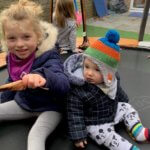
Ruby’s Story
Ruby is 5 and has Angelman Syndrome. Ruby has a little sister called Lily and a little brother called Toby.
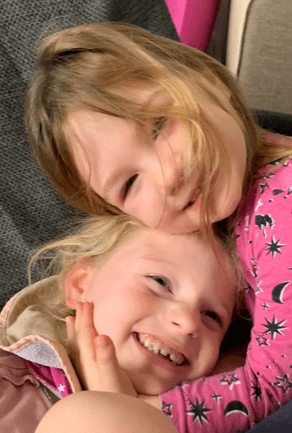 Ruby’s mum Felicity described Ruby as being “full of fun and mischief and she gives THE best cuddles and smiles.” Ruby had a difficult birth in that she wasn’t breathing, had suspected sepsis and spent her first week in intensive care.”
Ruby’s mum Felicity described Ruby as being “full of fun and mischief and she gives THE best cuddles and smiles.” Ruby had a difficult birth in that she wasn’t breathing, had suspected sepsis and spent her first week in intensive care.”
Felicity, recalls. “From 4 months old we knew something wasn’t quite ‘right’ with Ruby’s development. She wasn’t holding items like other babies her age, she would also turn to her side and make spasm movements, which we now know were seizures. Alongside this Ruby wasn’t meeting any other milestones such as sitting, babbling, crawling and walking.”
Felicity says: “I remember sitting with my other mum friends and their babies (we are all still very close now) and crying inside because I wanted my baby to be doing what the others were and knowing something was actually seriously wrong. Part of me didn’t want to admit it but deep down I knew something was seriously wrong.”
It wasn’t until Ruby was 2 years old that Ruby’s paediatrician agreed to commence genetic testing and Ruby was diagnosed with Angelman Syndrome. Felicity explains: “Part of us felt absolute relief that finally we had a diagnosis. The other half couldn’t believe how serious Ruby’s disability would be. We now knew she would never speak, have extremely poor mobility, suffer seizures for many years and would require life-long care. Having to get our heads around this took considerable time.”
“As so many children with special needs Ruby surprises us every day,” Felicity explains. “Ruby is toilet training and is beginning to tell us when she needs a wee by patting herself. She can now walk with constant supervision and with lots of medication Ruby’s seizures are under some control.” Felicity adds: “Above all this Ruby is so happy and makes everyone around her smile and want to be better people. She also gives the best hugs in the world!”
The Sandcastle Trust gifted Ruby an iPad and specialist communication software under the Sandcastle Memory At Home category of support.
Felicity says: “Now, thanks to the Sandcastle Trust, Ruby is beginning to use a communication aid to tell us how she is feeling, her likes and dislikes and make choices with her food.” Felicity adds: “This will give Ruby a better quality of life and allow her to learn how to communicate with her parents, siblings and teachers.
We cannot thank the Sandcastle Trust enough for giving Ruby this opportunity to have a voice and learn how to communicate with others. It means so very much. Thank you!”

